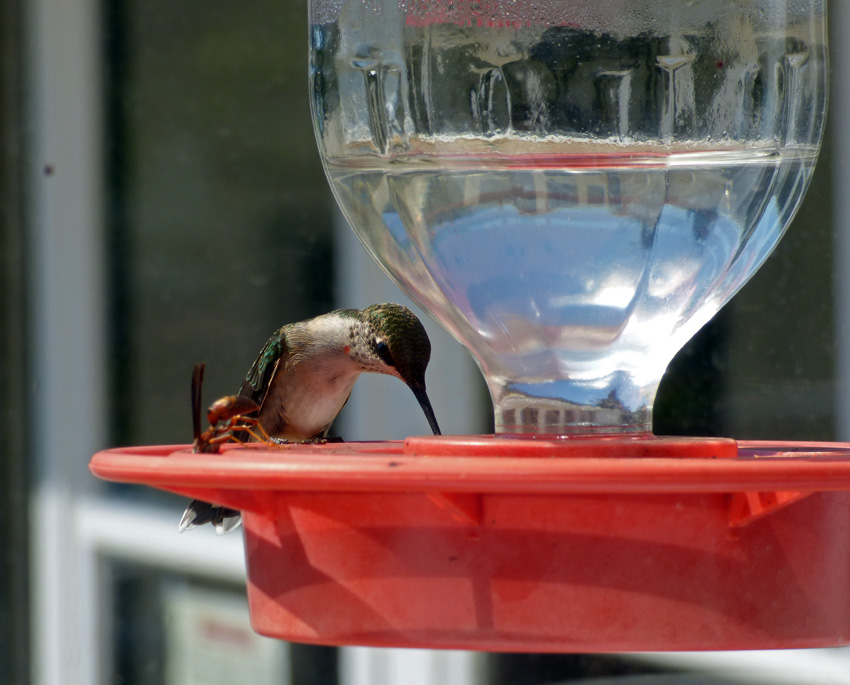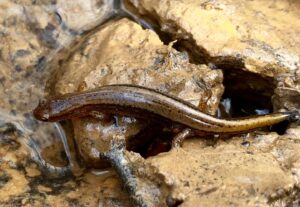
Many of us love to hang a Hummingbird feeder near a window. Beautiful flying gems hover near the feeder to sip a quick snack, or they may perch for a longer more satisfying drink. A simple solution of 1/4 sugar dissolved in 1 cup of boiling water provides all they need. Please don’t use the red commercially prepared nectar! The feeders need to be easy to clean, to get rid of mold. People often ask when they should take down their feeders, not wanting to tempt the hummers into staying in Kentucky when they should be on their way to Central America for the winter. Believe me, when it’s time to migrate, they know and feeders in your yard won’t make a difference. Until then, they need to bulk up on nectar to increase their body weight for the long flight south.

However, that doesn’t mean you should take down your feeders altogether. At Creasey Mahan Nature Preserve, we fill our feeders outside the office windows at Mahan Manor with fresh nectar for the benefit of our new honey bees. The 7 inch downpour that put a damper on our Haunted Hike earlier this month, also affected the nectar and pollen available to the bees. The flowers in our garden were beaten down to the ground by the hard rain.

Bees gather the pollen and nectar from flowers to make honey, right? But they don’t intend the honey to be used on our morning toast. Many of the native bee species do not overwinter, but the adults die when the winter turns cold. Honey bees live throughout the winter in their hives. They eat the honey they’ve made over the summer to survive the winter. If they can’t make and store enough honey, (at least 40 pounds of honey stored by October) they won’t all live through the winter. So even if the hummingbirds have left your yard, keep filling the feeders for the bees!

